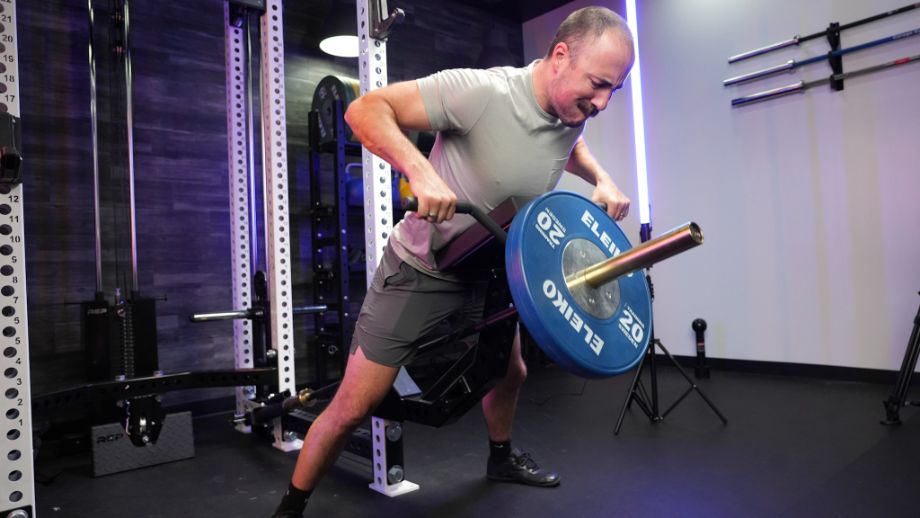We test and review fitness products based on an independent, multi-point methodology. If you use our links to purchase something, we may earn a commission. Read our disclosures.
The T-bar row is a staple back exercise in many strength training programs that bolsters your back size and strength, and, assuming you perform it the traditional way correctly, fortifies your lower back stability.
RELATED: Best Back Exercises
From step-by-step instructions to mistakes to avoid, I’ve broken down everything you need to know about the T-bar row based on nearly a decade of coaching clients as a certified personal trainer. So, if you’re ready to build the back of your dreams, let’s dive into the details on this backside exercise that offers plenty of muscle-building upside.
How To Do the T-Bar Row
To perform the T-bar row correctly, it’s crucial to maintain a strong, stable posture by keeping your back straight and core engaged. As you pull the weight toward your chest in a controlled motion, focus on retracting your shoulder blades and squeezing your back muscles at the top of the movement for maximum muscle engagement.
RELATED: Back Muscles Anatomy
How to do it:
- Secure a barbell to a landmine attachment and load the free end of the bar with weight plates.
- Hook a chinning triangle or close-grip dual handle about eight to 10 inches from the weight plate so it is facing upward.
- Stand over the barbell with your feet about shoulder-width apart, bend your knees slightly, and hinge at the hips to lean forward.
- Grab the handle with both hands, engage your core, and keep your back straight so your chest is parallel to the floor.
- Pull the barbell toward your lower chest by retracting your shoulder blades and driving your elbows back.
- Contract your back muscles at the top of the movement.
- Slowly lower the barbell back to the starting position while maintaining tension throughout your back muscles.
- Repeat for the desired number of repetitions before releasing the handle.
Note: There are several ways to perform a T-bar row utilizing different equipment. In the steps below, I cover the landmine row version that involves a barbell and weight plates. However, you can also use a specialized plate-loaded machine with a multi-grip bar for T-bar rows.
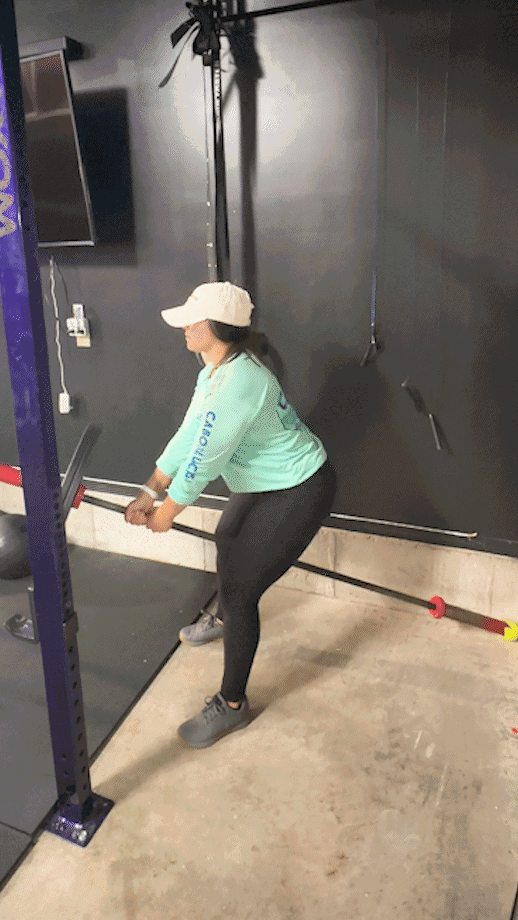
Modifications
- Dial it back: Beginners can perform the T-bar row at a more upright angle to place stress on the lower back and hamstrings. You can also work with a lighter weight and reduce the intensity by stopping three to four reps shy of failure instead of emptying your tank.
- Make it harder: Besides increasing the load, you can take things to the next level by pausing at the top and holding the fully contracted position for a few seconds before lowering the weight. Another option is to include tempo variations in which you slow down the eccentric (lowering) phase or perform more explosive concentric contractions.
How To Do T-Bar Rows At Home
If you have a home gym: If you’re working out at home, you can simulate the T-bar row by securing one end of a barbell in a corner. Load your weight plates onto the opposite end of the barbell and set it in the same position I outlined above. Hook a chinning triangle or close-grip dual handle underneath the barbell about eight to 10 inches from the weight plates. Grasp the handle with both hands turned inward and execute the movement pattern just like you would on the landmine attachment or machine.
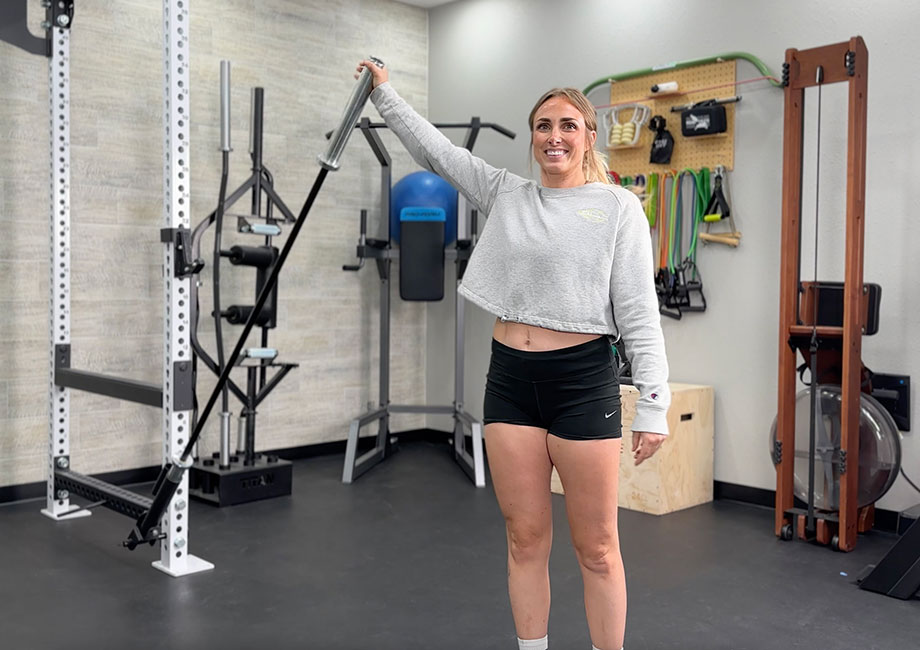
If you have minimal equipment: The T-bar row is a horizontal pull, one of seven fundamental movement patterns. If you’re in a pinch and need to replace/replicate the movement in your current program, simply swap it out for another more accessible horizontal pull. If you only have bands, for example, sit on the floor with your legs extended in front of you. Wrap a heavy looped band around your feet, slightly bend your knees, grab the other side of the loop with both hands, and row it to your stomach.
RELATED: 17 Lower Back Exercises to Try for Stability And Strength
T-Bar Row Variations
- Chest-supported T-bar row: Lie face down on an incline bench with your chest supported and perform the rowing motion with a neutral grip. This variation provides extra stability while allowing you to isolate your back muscles.
- Banded T-bar row: Use a resistance band to increase the tension as you pull the weight toward your chest.
- Close-grip T-bar row: If you’re on a T-bar row machine, use a narrower grip to place more emphasis on your rhomboids.
- Wide-grip T-bar row: Target your lats by using a wider grip. Performing this variation along with lat pulldowns and pull-ups will help you build a broad back that’ll look impressive from any angle.
T-Bar Row Alternatives
Not quite ready for the T-bar row? As a certified personal trainer (CPT), here are a few of my favorite rowing exercises you can substitute into your program that’ll still put your back muscles (and more) to work.
Barbell Bent-Over Row
Why do it: A popular compound exercise that offers physique and performance benefits, the bent-over barbell row effectively strengthens your lats, rhomboids, and erector spinae. Your glutes, hamstrings, and core muscles must work synergistically to keep you in the proper position for this classic back workout movement. You can vary your hand placement and grip to tailor the exercise to target specific muscle groups.
How to do it:
- Stand with your feet shoulder-width apart with a barbell positioned directly over your feet.
- Bend your knees slightly, hinge at your hips, and keep your back straight so your torso is at a 45-degree angle.
- Grab the barbell with an overhand grip with your hands slightly wider than shoulder-width apart.
- Engage your core, retract your shoulder blades, and pull the barbell off the floor in a controlled motion.
- Drive your elbows back until the bar touches your torso.
- Squeeze at the top of the movement, then slowly lower the weight until your arms are extended.
- Repeat for the desired number of reps.
RELATED: Bent-Over Row Variations
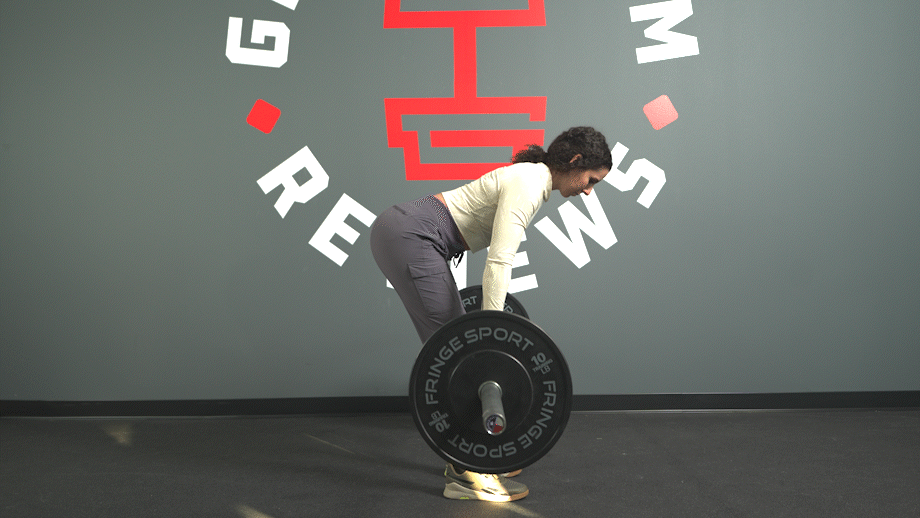
Pendlay Row
Why do it: Made popular by decorated weightlifting coach Glenn Pendlay, this barbell row variation utilizes a specific technique to generate immense force during the pulling portion of the movement. You’ll perform a floor-to-stomach rep as explosively as possible, making it particularly useful for athletes and lifters who want to develop maximum strength and power.
How to do it:
- Stand with your feet shoulder-width apart with a loaded barbell in front of you.
- Bend your knees slightly, hinge at your hips, and lower your torso until it’s parallel to the ground.
- Grab the barbell with an overhand grip with your hands slightly wider than shoulder-width apart.
- Brace your core, retract your shoulder blades, and lift the barbell off the ground explosively while keeping your elbows close to your body.
- Pause at the top of the movement, then lower the barbell back down until it touches the floor.
- Repeat for the desired number of reps.
RELATED: How to Do the Pendlay Row
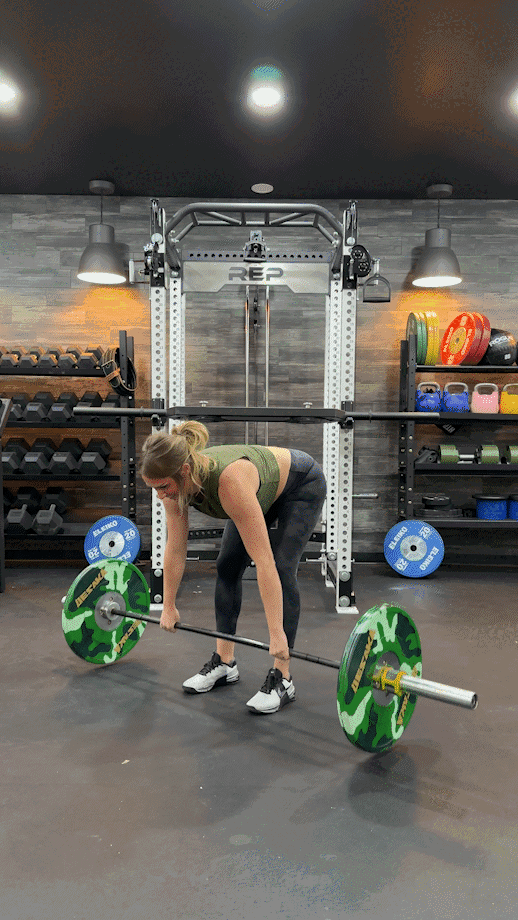
Single-Arm Dumbbell Row
Why do it: Opting for dumbbells over a barbell and weight plates allows you to enjoy the benefits of unilateral exercises. Not only can you build muscle and strength in your back and core, but you can also work on correcting any imbalances.
How to do it:
- Hold a dumbbell in one hand.
- Place your opposite knee and hand on a weight bench for support.
- Maintain a neutral spine and pull the weight toward your hip.
- Squeeze your back muscles at the top, then lower the dumbbell until your arm is fully extended.
- Repeat for the desired number of reps on both arms.
RELATED: Best Dumbbells
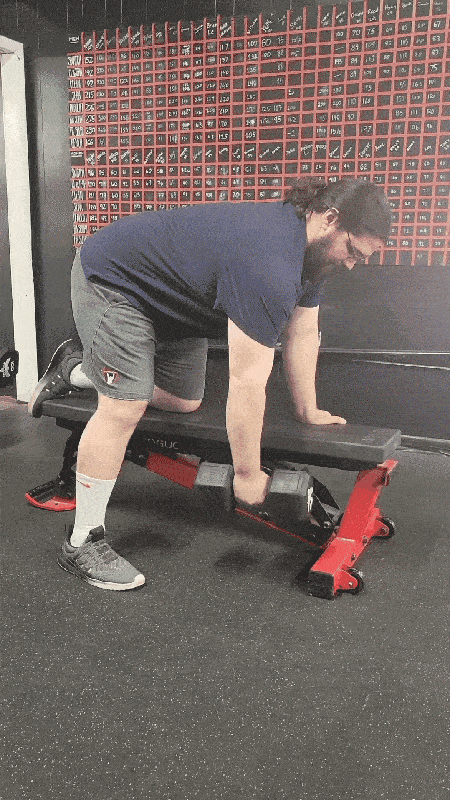
Benefits of the T-Bar Row
A muscle- and strength-building exercise that effectively recruits your lats, rhomboids, and erector spinae, the T-bar row offers several intriguing benefits. Here are some ways it pays to put this movement in your training plan:
Promotes Muscle Growth
It’s no secret that rowing is the key to growing a well-developed back. The T-bar row does that by forcing your lats, rhomboids, and other muscles to work together as you pull and squeeze.
Performing three to four sets of eight to 12 reps while following progressive overload principles will lead you to a thicker, wider back. As you improve, you can manipulate variables like the volume, load, or tempo to increase the demand on your body and continue to stimulate muscular growth and development.
RELATED: 11 Best Supplements for Muscle Growth
Improves Posture
The T-bar row strengthens your upper and lower back muscles, helping to counteract the effects of prolonged sitting—even I’m guilty of this—and poor posture. By promoting a strong, stable spine, this exercise can help alleviate back pain and reduce the risk of injury during everyday activities.

Enhances Functional Strength
The T-bar row mimics natural pulling movements—such as lifting objects from the ground— making it a highly functional exercise for real-life activities. If you’re a dedicated lifter, including this exercise in your regimen will also set you up for more success on the deadlift.
RELATED: An Olympian Explains How to Increase Strength
Common T-Bar Row Mistakes
Like many back exercises, the T-bar row can quickly go from helpful to harmful if you disregard the details. Be mindful of these common pitfalls to maximize the return on your efforts and minimize your chances of injury.
Rounding Your Back
Lifters round their backs is one of the most common mistakes I see when training. Whether it’s due to tight hamstrings, a weak core, or too much weight, this loss of proper form can place a tremendous strain on your spinal erectors and ramp up your chances of suffering a lower-back injury. Keep your core engaged and use an appropriate load for your strength levels.
Using Momentum
It’s all too easy to use momentum instead of focusing on smooth, controlled movements. Avoid swinging from one rep to the next by holding the contraction at the top. This will also increase time under tension—a key component in optimizing muscle growth1.
Not Completing the Full Range of Motion
While partial reps have their place, it’s best to perform the T-bar row with the proper range of motion. Don’t lower the weight halfway down, and do yourself a favor by executing the full repetitions to reap the most muscle-building rewards.
Muscles Worked by the T-Bar Row
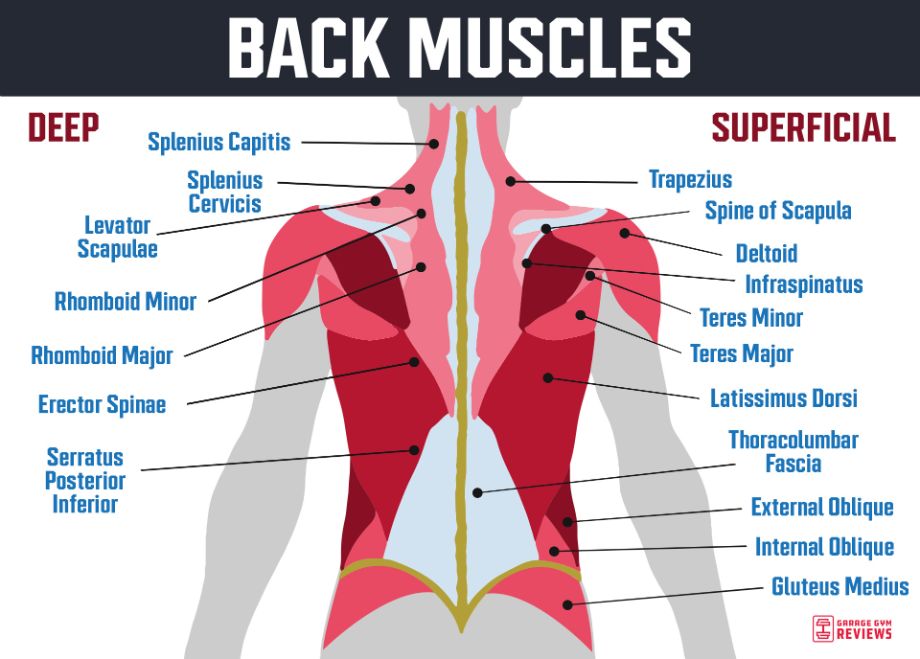
The T-bar row primarily engages the back muscles—the latissimus dorsi, rhomboids, and erector spinae. Meanwhile, your biceps and rear deltoids play supporting roles. Knowing how each muscle factors into the movement can help you perform the T-bar row safely and also understand how to change the exercise to target a specific muscle more effectively.
- Latissimus dorsi: The primary muscle targeted by the T-bar row, your lats are responsible for shoulder extension and adduction.
- Rhomboids: Located in the upper back, these muscles assist in retracting your shoulder blades and maintaining proper posture.
- Erector spinae: These lower-back muscles help stabilize your spine, especially during the pulling motion.
- Trapezius: Your traps help elevate and retract your shoulder blades.
- Biceps: Your biceps contribute to the concentric phase of the rowing motion by helping with elbow flexion.
- Posterior deltoids: More commonly called your rear delts, these muscles play a secondary role by helping stabilize your shoulder joint.
RELATED: 13 Exercises for a Muscle-Growing Lat Workout
T-Bar Row: Final Thoughts
Whether you’re a bodybuilder, powerlifter, or home gym enthusiast, the T-bar row can offer tantalizing muscle-building gains and the ability to enhance your posture and functional strength. Of course, maintain your form and keep your ego in check when performing this compound movement. When done correctly (and consistently), the T-bar row can help create the wide and dense cobra back you’ve always wanted.
T-Bar Row: FAQs
Can beginners perform the T-bar row safely?
Beginners can safely perform the T-Bar row by starting with light weights and focusing on proper form. Gradually increasing the weight as strength and technique improve will help prevent injury and lead to progress.
Is the T-bar row suitable for a full-body workout?
Yes, the T-bar row engages multiple muscle groups in the lower and upper body, making it an excellent addition to your full-body workout routine.
RELATED: Full-Body Barbell Workout
How often should I incorporate the T-Bar row into my training program?
Depending on your fitness goals, you can include the T-bar row in at least one to two weekly workouts. Because it can be taxing, make sure to have adequate rest and recovery between training sessions.
References
- Burd, N. A., Andrews, R. J., West, D. W., Little, J. P., Cochran, A. J., Hector, A. J., Cashaback, J. G., Gibala, M. J., Potvin, J. R., Baker, S. K., & Phillips, S. M. (2012). Muscle time under tension during resistance exercise stimulates differential muscle protein sub-fractional synthetic responses in men. The Journal of Physiology, 590(Pt 2), 351-362. https://doi.org/10.1113/jphysiol.2011.221200
Further reading

These 10 bent-over row alternatives can add muscle and strength to your workout routine when doing the traditional movement isn’t an option. Read more

In this Sole SB900 review, we’ll go over the details of this solidly built cycling bike to help you decide if it’s right for your home gym. Read more

We’ve compiled the best Memorial Day treadmill sales so you can be up and running toward your fitness goals without breaking your budget. Read more

Trying to find the best iFIT workouts? We’re here to help with our top picks, no matter what your fitness level or preferred type of training program looks like. Read more

